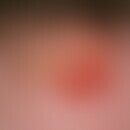Biographical detailsThis section has been translated automatically.
Schleiden, Matthias Jacob, (¤ 5.4.1804 Hamburg † 23.6.1881 Frankfurt a.M.).
Matthias Jacob Schleiden was born the son of a physician. He attended the Johanneum from 1810-21 and the academic high school in Hamburg until 1824. He then studied law at the University of Heidelberg and received his doctorate in 1826. He then returned to his hometown of Hamburg and settled there as a notary. He was enrolled as a notary until 1831.
After an attempted suicide in 1832 as part of his depressive phases, he began studying medicine at the University of Göttingen in 1832 or 1833, during the course of which his interest in the natural sciences, especially botany, increased. He was mainly concerned with botany, plant physiology and especially plant embryology.
Schleiden wrote articles on phytogenesis and was the first botanist to prove that the various parts of plants consist of cells. He was decisively inspired by the English botanist Robert Brown (1773-1858), who had discovered the cell nucleus in 1831 and who drew Schleiden's attention to the importance of microscopic observations on cell content bodies during a visit to Berlin in 1836. Schleiden postulated that every plant development begins within a cell and that this must therefore be the starting point of every investigation (Btr. z. Phytogenesis, in: Archiv f. Anatomie u. Physiol. 1838, pp. 137-76).
Together with Theodor Schwann, who founded the animal cell theory in 1839, Schleiden created the foundations of Rudolf Virchow's cellular pathology with the cell theory. Schleiden founded the "Zeitschrift für wissenschaftliche Botanik" in 1844 together with C.W. von Naegeli.
Amyloid:
Schleiden published his numerous botanical findings in book form in 1842-43 under the title "Grundzüge der wissenschaftlichen Botanik." It was in this book that Schleiden first used the term "amyloid" for starch, meaning "containing starch." The word itself is derived from the Latin word "amylum" for starch. Schleiden describes "amyloid" as "a normal amylactic component in plants" . Schleiden proved that this substance is colored blue by iodine. The application of the iodine-sulfuric acid test to plants was a remarkable scientific discovery. At the same time (1839), the French chemist Anselme Payen (1795 - 1878) described a substance in forests that resembled starch. This substance reacted similarly to starch in the iodine-sulfuric acid test, and Payen named it "cellulose." The iodine-sulfuric acid reaction later became a standard procedure used by botanists to detect cellulose in woods .
LiteratureThis section has been translated automatically.
- Schleiden Matthias Jacob (1838): Contributions to phytogenesis. In: Archiv für Anatomie, Physiologie und wissenschaftliche Medicin. 1838, pp. 137-176.
- Schleiden Matthias Jacob (1842-1843): Grundzüge der wissenschaftlichen Botanik nebst einer methodologischen Einleitung als Anleitung zum Studium der Pflanze. 2 parts. Leipzig 1842, 1843, 1850.
- Schleiden Matthias Jacob (1848): The plant and its life" (1848).



